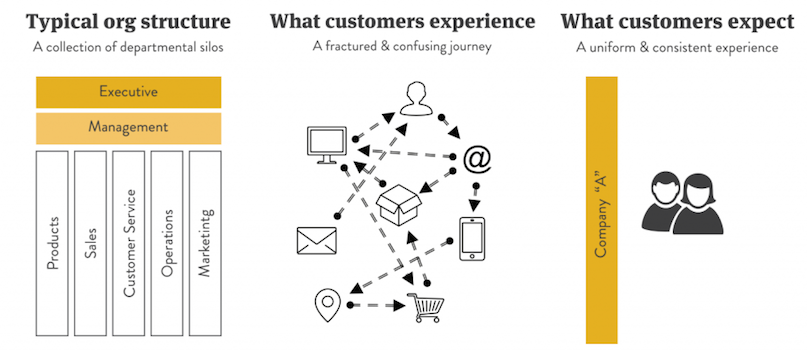
The most tangible and obvious dimension of customer experience is a “touchpoint.” Read more about the five dimensions of customer experience here.
We describe a touchpoint as any direct interaction between your customers and your business. This includes obvious things like:
-Websites;
-Ads (print, radio, social media, mobile, etc.);
-Emails (campaigns or regular);
-Kiosks/check-in counters;
-In-store sales people;
-Customer service call centres.
But it also includes other, more subtle things such as:
-Search engine profile and link results;
-Online resources (FAQ page, YouTube videos, etc.);
-On-site signage/directions.
Regardless of their subtlety, touchpoints are often where customers form a long-lasting impression of your business, either positively or negatively.
Unfortunately, most businesses often overlook the subtle touchpoints while categorizing the obvious ones by department. This results in touchpoints being designed and delivered entirely separate from one another: marketing touchpoints are distinct from sales touchpoints; sales touchpoints are distinct from customer service touchpoints; and so on.
This typically leads to a fractured and confusing journey for the customer as they jump from one touchpoint to another in a way that contradicts their expectation of a uniform and consistent experience.
From the customers’ perspective, touchpoints are not isolated “mini-experiences.” Instead, you must think of them as part of a collective whole that must work together to communicate your brand message, address customers’ needs and concerns, and help differentiate you from your competitors.
By taking the time and effort to look at your touchpoints this way, you will be able to uncover weak links, build from strong points, and perhaps even identify opportunities to create new types of touchpoints that will all help to improve your customer experience.
Of course, the obvious outcome of such an approach requires a shift in thinking internal to the business. You must look beyond traditional hierarchies and departmental silos to design the overall journey, no easy feat by any means.
But if you achieve this level of co-operation, you will be rewarded with astonishing levels of customer loyalty, enthusiasm, and competitive superiority.
--
About the Author
James Grieve is a Certified Management Consultant and partner in Nucleus Strategies, a Kelowna-based consulting firm that specializes in working with businesses in a variety of industries to design great service experiences that delight customers and improve business performance. He can be reached at 778.214.6010, or james@nucleus-strategies.com.



